The Thermal Data
In a change from the 360mm thermal testing, all other radiator sizes are only going to be tested at 1.0 GPM. We proved that for 95% of the rads tested, flow rates over 1.0 GPM did not make any significant impact on the radiator performance. The decision to only test at 1.0 GPM is also because of the time required to complete this testing, and running the additional flow rates effectively doubled the required test time.
A total of 6 tests were conducted at 1.0 GPM with fan speeds of 750 rpm, 1300 rpm and 1850 rpm being run in Push Only and Push/Pull. All inclusive this testing still takes between 40 – 50 hours of logging time to get the results that are presented.
Below is the final data results gathered from at least 5 data logging runs at the flow rate and fan rpm combination. The most stable 15 minute period from each logging run was used and then averaged with the other runs to obtain the data for the table below. A total of 16 temperature sensors were used in the thermal test chamber (8 air in, 2 air out, 3 water in, 3 water out) each take a reading every second and logged via a CrystalFontz unit.
The data in the table below is the averaged results of the logging runs which has then been used to create all the plots and tables there-after.
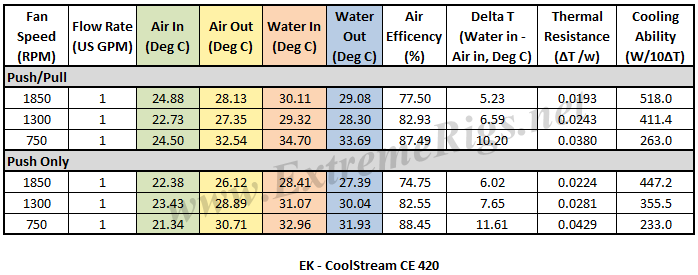
The performance metric of critical importance is the delta between the warm coolant temperature in and the cold ambient air temperature in to the radiator. Given that the system is well insulated and in equilibrium and we know the heat input to the system then we can also calculate a very important number – that is the amount of power required to raise the coolant temperature 1C (or 10C which is a more useful reference point).
Let’s take a look at the Delta T results from the tests. Note that the extrapolation of the curve is much more sensitive to error than in between the tested range.
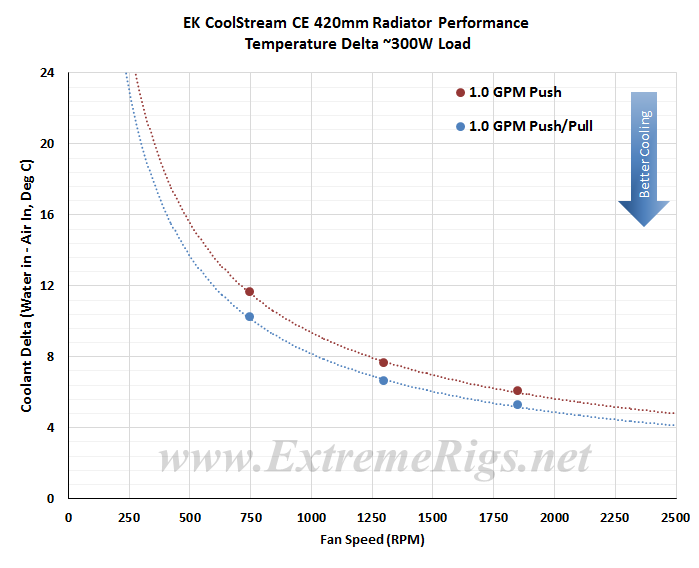 I was not too concerned about the actual delta numbers, more so the trend pattern, and as we should expect, the deltas come down significantly as the fan speed is increased.
I was not too concerned about the actual delta numbers, more so the trend pattern, and as we should expect, the deltas come down significantly as the fan speed is increased.
Delta T results (as above) is not always helpful when thinking about how many radiators you would need to cool your system. Instead it’s more useful to know the delta/W, or more usefully, the inverse metric of W/delta C. The metric plotted below tells us how many watts are dissipated by the radiator when the coolant rises 10C above ambient temperatures. (W/10 Delta T):
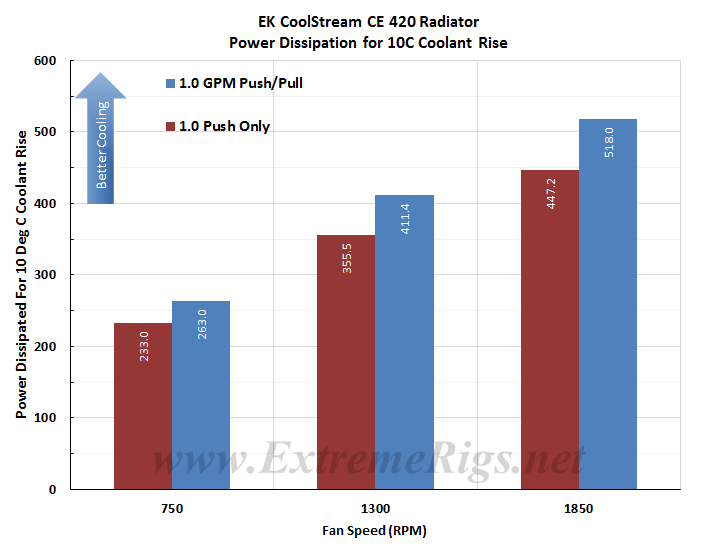 This same data can now be plotted on a chart so that an end user can interpolate their own fan speed. Note again that the extrapolation of the curve is much more sensitive to error than in between the tested range.
This same data can now be plotted on a chart so that an end user can interpolate their own fan speed. Note again that the extrapolation of the curve is much more sensitive to error than in between the tested range.
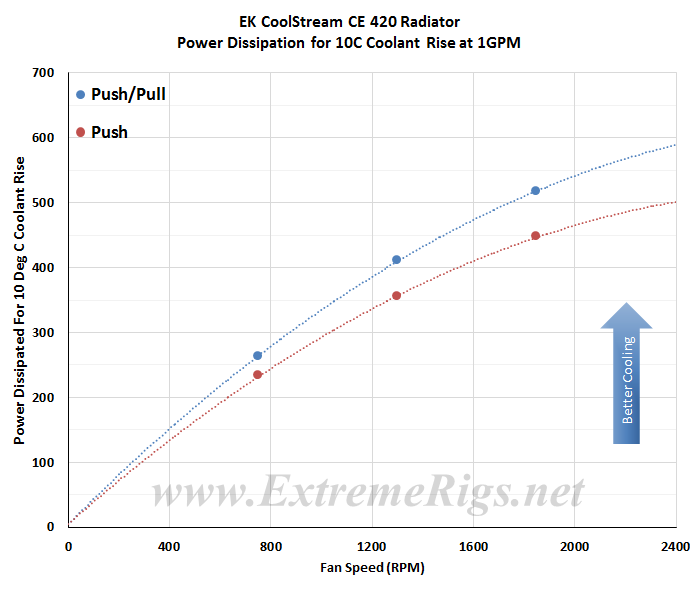 With the CE 420’s high fin count of 18 FPI combined with it’s medium thickness core it was able to perform very efficiently in with a Push Only fan assembly. Adding a second set of fans (Push/Pull) did not greatly boost performance with increases between 11% and 14% being recorded.
With the CE 420’s high fin count of 18 FPI combined with it’s medium thickness core it was able to perform very efficiently in with a Push Only fan assembly. Adding a second set of fans (Push/Pull) did not greatly boost performance with increases between 11% and 14% being recorded.
Now let’s analyze that data some more…








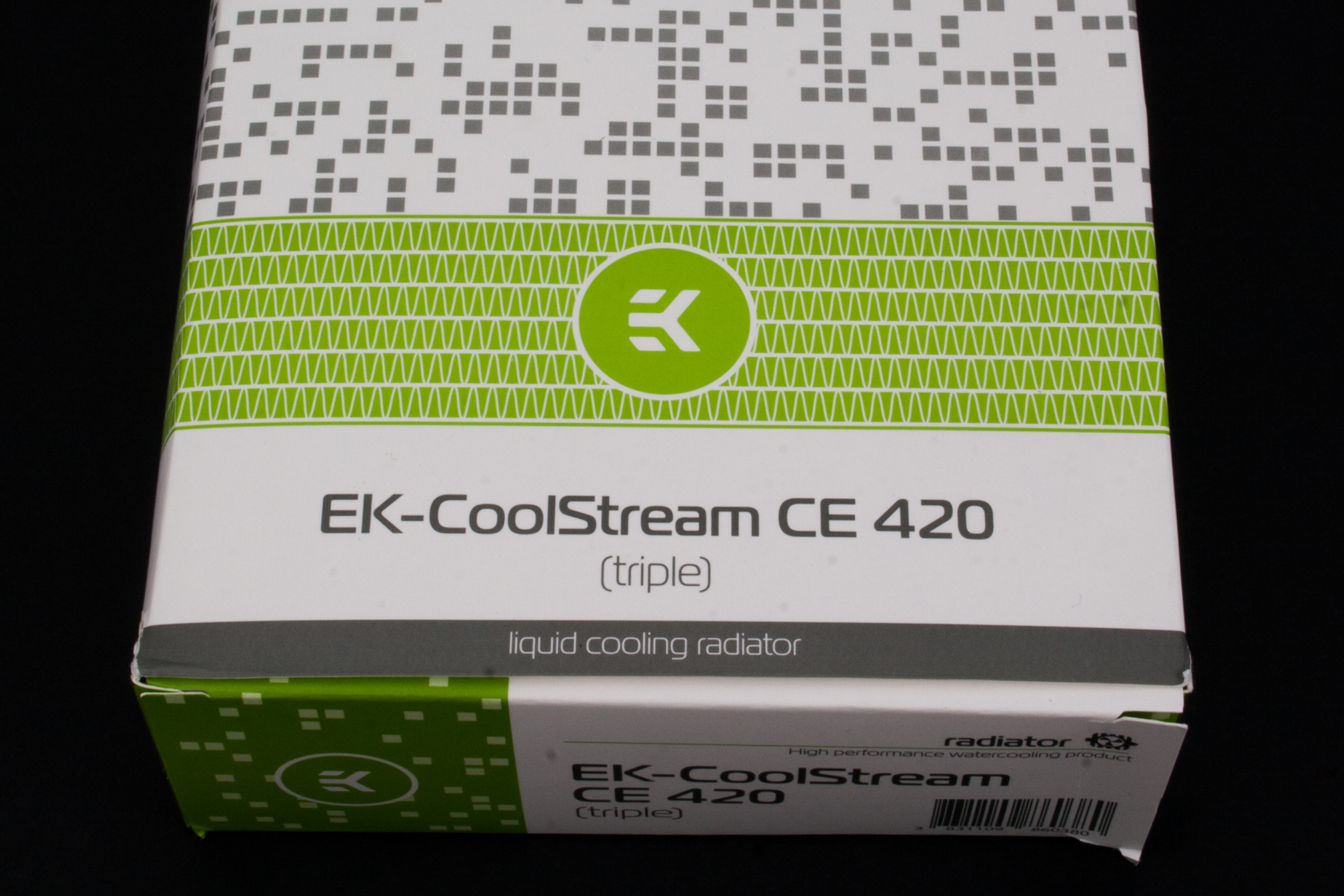



Nice review.
I’m looking forward to CE 280 & nemesis 280 series reviews.
Nice review.
I am looking forward to CE 280 and Nemesis 280 reviews.
Nice review!
Next… vs Nemesis 420 GTX ? ^^
Which is better 420 radiator ?
I would love to see this compared to the Nemesis GTS 420. I’m just about to buy and build my first full custom loop and I’m planning to use the Nemesis GTS rad for it, other than that it will be all EK. With the GTS I can just about do push/pull if needed, with the CE that would not be an option due to space limitations. In CE’s favour though I get a 10% discount on it and could incorporate it into one shipping instead of two. Visually I definitely prefer the European versions of the Hardware Labs radiators though. Choices, choices…
[…] it’s results against the other 140mm radiators we have tested. Previously we reviewed the CE 420 and currently the CE 280 is under scrutiny, so this CE 140 review will form part of the “CE […]
awesome work done, looking forward to the CE 280 and CE 140 reviews (if you’re doing them ;D ).
Thanks,

Review for the CE140 has been published already with the CE280 cued up in the to do list.
EK CoolStream CE 140 Radiator Review
[…] EK CE 420 Radiator Hardware Labs SR2 420 Radiator […]
Comments are closed.